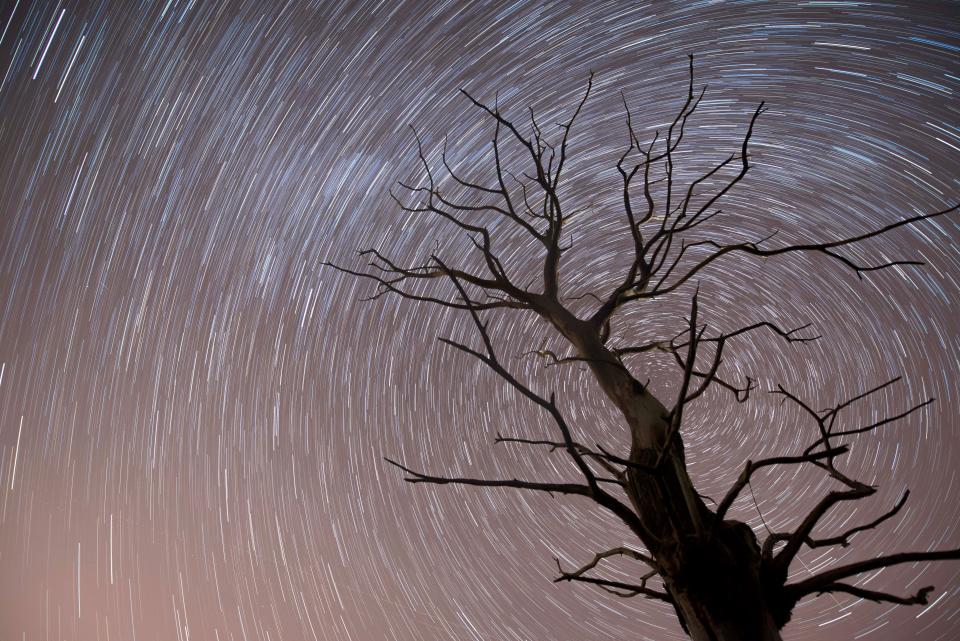The Leonid meteor shower peaks this weekend. Here's what to know to watch in New Mexico.
The Leonid meteor shower is back for another year of space glitz caused by the Earth passing through the debris field left behind by the comet 55P/Tempel-Tuttle.
Every November, the dust and rock particles create a dazzling display of meteor streaks across the night sky as they incinerate in the atmosphere.
Here is everything to know about the 2023 Leonid meteor shower, including the peak viewing dates and where and when in New Mexico you'll have the best chance of seeing the peak display.
What is the Leonid meteor shower?
The Leonids are a rather active meteor shower that is easily seen in the Northern and Southern hemispheres every November.
“As comets orbit the sun, they leave dust behind in their orbits,” said Theodore Kareta, a postdoctoral researcher at Lowell Observatory in Flagstaff.
“Meteor showers occur when the Earth crosses one of these cometary dust trails and the dust burns up in our atmosphere. How much dust is in the trail, at what angle the Earth crosses it and what time of year this happens are all factors in where to look, when to look, and whether or not a meteor shower is really stunning or a real dud.”

What are the best days to watch for the Leonid showers?
The Leonids will be active Nov. 3 through Dec. 2, 2023.
They will peak on Nov. 17 and 18.
What's the best time to watch the meteor shower?
Wladimir Lyra, associate professor of astronomy at New Mexico State University, said in New Mexico you must rise in the small hours to get the best view of the Leonids.
The Leonides get their name from the Leo constellation, which rises after midnight Lyra said.
What is the best place to observe the Leonid meteor shower?
Dark sky areas ― national parks, forests, camp grounds and desert areas ― are the best viewing spots.
New Mexico has several designated dark sky parks:
Capulin Volcano National Monument
Clayton Lake State Park
Chaco Culture National Historic Park
Fort Union National Monument
Salinas Pueblo Missions National Monument
Cosmic Campground
Valles Caldera National Preserve
The Leonids will rise in the eastern sky.
How long do the Leonids last?
The peak can be brief, lasting a few hours or so, and it's often during the predawn hours when the radiant point of the Leonids is high in the sky.
Views are advised to give their eyes at least 30 minutes to adjust to dark sky conditions for the best viewing. Binoculars and telescopes certainly help.
When is the next meteor shower?
There will be two more meteor showers in 2023:
Geminids: Nov. 19-Dec. 24, peaking Dec. 13-14.
Ursids: Dec. 13-24, peaking Dec. 21-22.
Tiffany Acosta, a reporter for azcentral.com contributed to this article.
This article originally appeared on Las Cruces Sun-News: Watch the Leonid meteor shower in New Mexico

